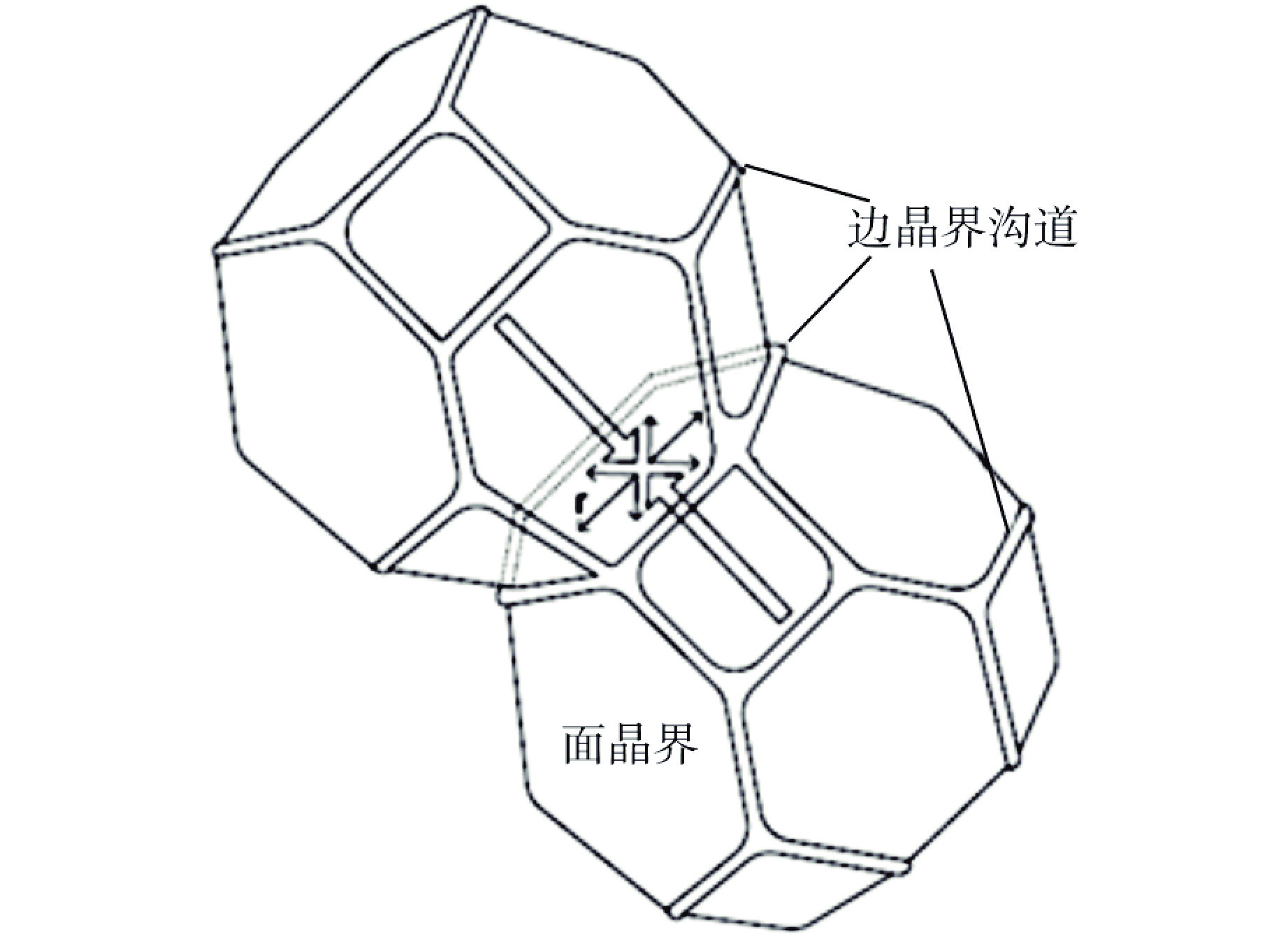Research on Percolation Models of UO2 Fission Gas Release
-
摘要: 为分析UO2燃料晶界气泡连通导致裂变气体间歇性释放的动力学过程,从而解决目前扩散模型预测的沿芯块径向释放份额与实验测量不符的问题,采用二维渗流模型模拟UO2燃料晶界气泡网络的演化及与燃料棒内自由空间连通的释放过程。研究结果表明,渗流模型预测沿芯块径向的裂变气体释放份额在芯块中间部分出现局部峰值,并随着时间向芯块外侧推进,与辐照试验观察到不同燃耗下径向裂变气体分布现象定性符合。因此,本研究建立的渗流模型能够从机理上解释此前扩散模型未能预测的UO2燃料裂变气体释放份额沿径向非单调分布现象。Abstract: In order to analyze the dynamic process of intermittent release of fission gas caused by UO2 fuel grain boundary bubble connection, so as to solve the problem that the radial release share predicted by the current diffusion model is inconsistent with the experimental measurement, a two-dimensional percolation model is used to simulate the evolution of UO2 fuel grain boundary bubble network and the release process connected with the free space in the fuel rod. The results show that the percolation model predicts that the share of fission gas released along the radial direction of the pellet shows a local peak in the middle part of the pellet, and advances to the outside of the pellet with time, which is qualitatively consistent with the radial fission gas distribution phenomenon observed in the irradiation test under different burnups. Therefore, the percolation model established in this study can explain the radial non-monotonic distribution of fission gas release share of UO2 fuel that could not be predicted by the previous percolation model from the mechanism.
-
Key words:
- Simulation /
- Nuclear fuel /
- Fission gas release /
- Percolation
-
-
[1] VAN UFFELEN P, HALES J, LI W, et al. A review of fuel performance modelling[J]. Journal of Nuclear Materials, 2019, 516: 373-412. doi: 10.1016/j.jnucmat.2018.12.037 [2] REST J, COOPER M W D, SPINO J, et al. Fission gas release from UO2 nuclear fuel: a review[J]. Journal of Nuclear Materials, 2019, 513: 310-345. doi: 10.1016/j.jnucmat.2018.08.019 [3] TONKS M, ANDERSSON D, DEVANATHAN R, et al. Unit mechanisms of fission gas release: Current understanding and future needs[J]. Journal of Nuclear Materials, 2018, 504: 300-317. doi: 10.1016/j.jnucmat.2018.03.016 [4] PETRIE C M, BURNS J R, RAFTERY A M, et al. Separate effects irradiation testing of miniature fuel specimens[J]. Journal of Nuclear Materials, 2019, 526: 151783. doi: 10.1016/j.jnucmat.2019.151783 [5] STAN M, RAMIREZ J C, CRISTEA P, et al. Models and simulations of nuclear fuel materials properties[J]. Journal of Alloys and Compounds, 2007, 444-445: 415-423. doi: 10.1016/j.jallcom.2007.01.102 [6] HU S Y, LI Y L, SUN X, et al. Application of the phase-field method in predicting gas bubble microstructure evolution in nuclear fuels[J]. International Journal of Materials Research, 2010, 101(4): 515-522. doi: 10.3139/146.110304 [7] MILLETT P C, TONKS M R, BINER S B. Grain boundary percolation modeling of fission gas release in oxide fuels[J]. Journal of Nuclear Materials, 2012, 424(1-3): 176-182. doi: 10.1016/j.jnucmat.2012.03.006 [8] TURNBULL J A, TUCKER M O. Swelling in UO2 under conditions of gas release[J]. The Philosophical Magazine, 1974, 30(1): 47-63. doi: 10.1080/14786439808206532 [9] DOWLING D M, WHITE R J, TUCKER M O. The effect of irradiation-induced re-solution on fission gas release[J]. Journal of Nuclear Materials, 1982, 110(1): 37-46. doi: 10.1016/0022-3115(82)90405-6 [10] SPEIGHT M V. A calculation on the migration of fission gas in material exhibiting precipitation and re-solution of gas atoms under irradiation[J]. Nuclear Science and Engineering, 1969, 37(2): 180-185. doi: 10.13182/NSE69-A20676 [11] BOOTH A H. A method of calculating fission gas diffusion from UO2 fuel and its application to the X-2-f loop test: NSA-12-000399[R]. Canada: Atomic Energy of Canada Ltd. , 1957. [12] FORSBERG K, MASSIH A R. Fission gas release under time-varying conditions[J]. Journal of Nuclear Materials, 1985, 127(2-3): 141-145. doi: 10.1016/0022-3115(85)90348-4 [13] GOULD H, TOBOCHNIK J, CHRISTIAN W. An introduction to computer simulation methods[M]. 3rd ed. Boston: Addison Wesley, 2016. [14] NOIROT J, AUBRUN I, DESGRANGES L, et al. High burnup changes in UO2 fuels irradiated up to 83 GWd/t in M5® claddings[J]. Nuclear Engineering and Technology, 2009, 41(2): 155-162. doi: 10.5516/NET.2009.41.2.155 -






 下载:
下载:







